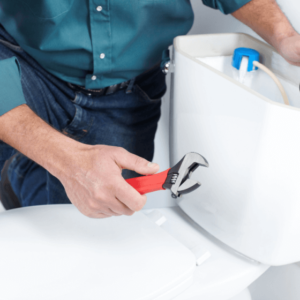Insects can put a damper on outdoor fun when they appear in large numbers. They can be more than a nuisance, though. Some, such as mosquitoes, also can carry disease and potentially cause infection and sickness when they bite. Insect repellents are a good deterrent.
Bug Off!
Mosquitoes are probably the most common and overbearing insect nuisances during the summer months. Because they can carry serious illness-causing pathogens, such as West Nile Virus, a repellent should be used when outdoors during summer. Mosquitoes are attracted to warmth, moisture, the odor of your skin and even carbon dioxide that your body gives off. Insect repellents provide a barrier around you that they don’t find appealing.
Mosquitoes are most active in the evening hours and love areas with standing water: stagnant puddles and ponds, birdbaths, gutters, etc. If you find yourself outdoors near these areas, particularly in the evening, use a repellent to protect yourself. This doesn’t mean that you’re safe from the bugs in broad daylight. If you notice them buzzing around you, use some repellent, no matter the time of day.
There are a number of repellents from which to choose. Sprays and lotions that you apply to exposed skin and/or clothing are most effective in densely insect-populated areas. There are also citronella candles, mosquito coils and electronic devices, among other deterrents that are well-suited for backyard barbeques. You just need to choose which type is most effective for your situation.
Topical Sprays & Lotions
Topical repellents are usually found in spray and lotion formulas that most commonly contain DEET, a chemical approved by the U.S. Environmental Protection Agency (EPA) as the active ingredient. It is proven to prevent or decrease mosquito bites, as well as problems with ticks and chiggers. It is widely considered the most effective insect repellent available on the market. Repellents containing DEET usually are manufactured to contain up to 35% DEET (but can contain up to 100% concentrations), and, for adult use, can last up to eight hours. Products with lower concentrations of DEET can provide anywhere from one to five hours of protection. Repellents with DEET concentration of 10% to 30% are approved for use on children between the ages of 2 and 12 by the American Academy of Pediatrics.
Safety Alerts!
While DEET has been tested as safe for human use, it is recommended that you avoid using DEET-based products of any concentration on infants under six months of age.
Always store insect repellents in a utility closet or similar locked structure, safely out of reach of small children.
Picaridin is a more recent addition to insect repellents found in the U.S. market. It is said to provide effectiveness similar to that of DEET. More and more product lines are beginning to contain this ingredient. Picaridin-based products are said to repel mosquitoes, flies, ticks, fleas and chiggers.
Natural topical repellents often use naturally occurring chemicals found in oils from eucalyptus, spearmint or peppermint, pennyroyal and tea trees. Oil of lemon eucalyptus is found naturally in eucalyptus leaves and twigs and has been a used as a bug repellent for decades. According to the EPA, like most plant oils, oil of lemon eucalyptus does not cause any of the adverse effects that may occur from using repellents with DEET. These products usually contain around 30 to 40 percent of the active ingredient.
Like oil of lemon eucalyptus, citronella oil has been used for more than 50 years as a repellent. It repels insects by masking the carbon dioxide on skin to which insects are drawn. Citronella oil is most commonly found in insect-repelling candles but also is the active ingredient in some products that you apply directly to skin, such as lotions, gels, sprays and towelettes. Because they evaporate quickly, topical citronella products often need to be reapplied more frequently than other products.
Helpful Tip
Always read the product label and follow manufacturer instructions before using a topical repellent and apply only the recommended amount of repellent to cover exposed skin. For extended periods of time, reapplication will be necessary. Pay special attention to the maximum amount of applications that you can use in a 24-hour period. When choosing a repellent, look to see that it suits your needs, providing protection for the desired length of time that matches your outdoor activities. Keep in mind that repellent results depend on other factors that affect protection duration, such as the amount that you perspire, water exposure for sustained periods, air temperature and your personal “attractiveness” to insects (some people attract more insects than others, due to body chemistry).
Helpful Tip
Always choose an EPA-registered product that provides protection duration on the product label.
When using topical repellents, only apply them to exposed skin and/or clothing but never on areas under clothing. Don’t apply sprays directly near your eyes, nose or mouth. Never spray it directly on your face; apply it first to hands and then to your face. Don’t use repellents on cuts, irritated skin or other wounds. When returning from the outdoors, wash your skin with soap and water to remove the repellent and launder your clothes.
Area Repellents
Some people can experience an adverse reaction such as skin or eye irritation from topical repellents, and so choose “area” repellents to keep mosquitoes and other insects at bay. There are also some general health concerns about using DEET and other insecticides directly on the skin. In small amounts, though, DEET has been determined to be safe for use by the EPA if applied according to manufacturer’s directions. Still, many people prefer the peace of mind from using non-topical repellents.
Area repellents are beneficial for their ability to protect a larger multi-person location such as a patio, picnic area or wherever you’re enjoying outdoor activities. Area repellents fall into a couple of general categories such as citronella candles and other citronella-based products, products containing various insecticides, or electronic devices.
Citronella candles are an old standby to ward off swarming hordes of bugs. Citronella fumes repel mosquitoes, flies, ticks and fleas. You simply place candles around the perimeter of your location and light them. The citronella is activated and insects will largely stay away for as long as the candle burns.
The Off!® PowerPad® Lamp uses a candle/insecticide-treated pad combination to ward off mosquitoes. You light the candle inside the lamp and the heat from the candle activates the Allethrin in the pads. The small bit of smoke created by the lamp keeps insects at bay. This usually provides about four hours of protection.
Mosquito coils are another popular insect repellent. Products such as Off!® Patio and Deck Mosquito Coil kits work by burning a coil, usually made of an insecticide called Pyrethrum, inside the provided pot or jar. The coils burn for about eight hours and provide decent protection. The coil containers are refillable.
There are also products like Off!® Backyard mosquito pre-treatment that you spray on your yard. These sprays are attachable to your garden hose. You simply spray it on your yard like you would fertilizer or weed treatment to help keep mosquitoes away. They can be effective for up to eight weeks.
One of the latest devices to hit the market is the Off!® Clip-On™ fan-circulated personal repellent. You clip the device on to your belt or your pocket and the battery-operated fan inside blows an insecticide called Metofluthrin out around you to create a mosquito barrier. It can be used by adults or children and works for up to 12 hours. The Metofluthrin-coated strips inside the device are replaceable and need to be swapped out over time. This product works best when the wearer remains stationary.
Safety Alert!
While safe for use as directed, don’t directly inhale the vapors from these types of personal repellents.
Your local True Value® hardware store also has a selection of bug “zappers.” Another standby bug solution, these devices attract mosquitoes and other flying insects using a fluorescent light that bugs cannot resist. When the insects land on the light, they’re electrocuted. You simply place or hang the zapper somewhere adjacent to your patio, etc., so that the bugs go there and get zapped. Many units are rated to prevent flying insects within an acre, making them ideal for nighttime patio or deck use. While the noise of bugs getting zapped can sometimes be distracting, this is one of the most environmentally friendly methods of insect removal. Some units also have a light-activated sensor that turns the unit on at night for easy use and energy efficiency.
All right! Now you know what you need to keep bugs away and enjoy your summer outdoors.
Project Shopping List
Here’s what you’ll need to complete this project successfully.












